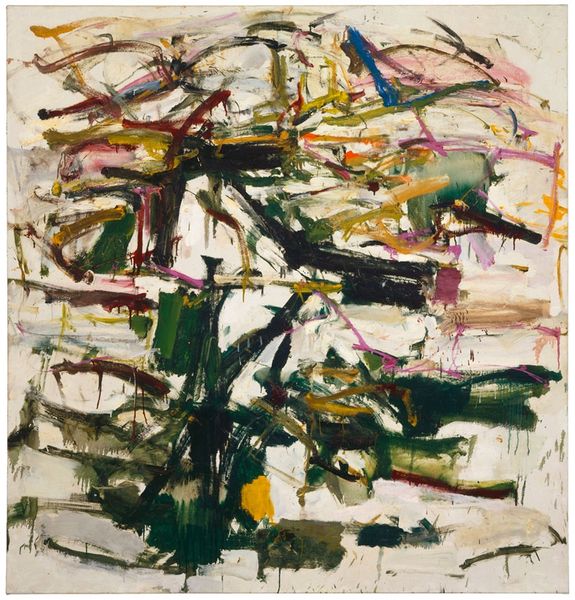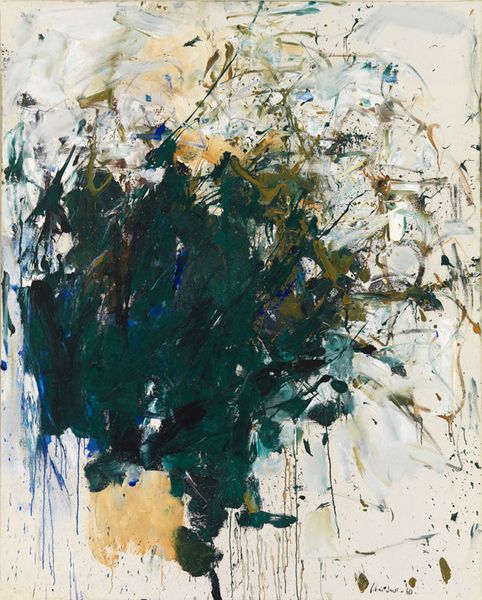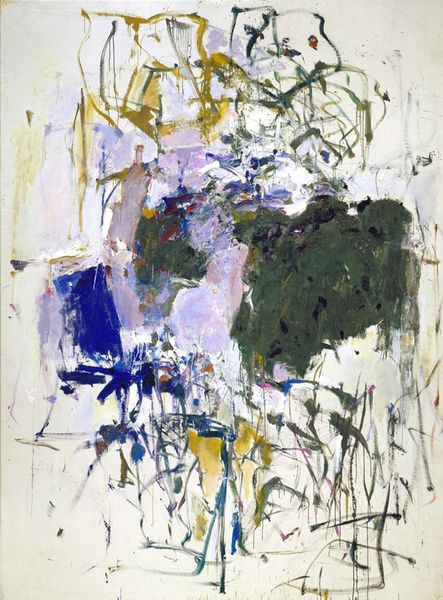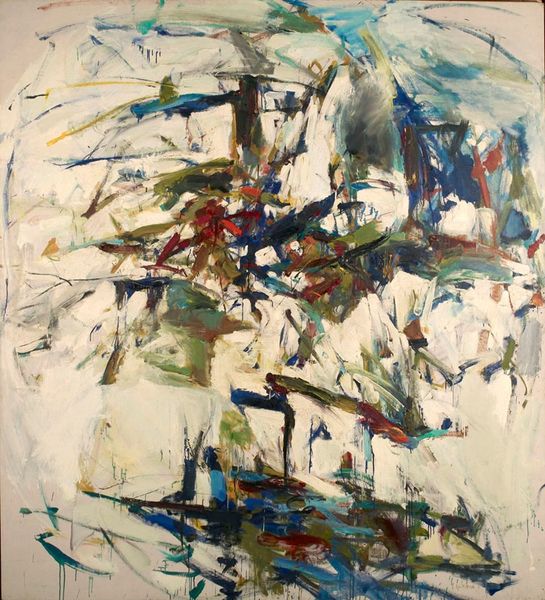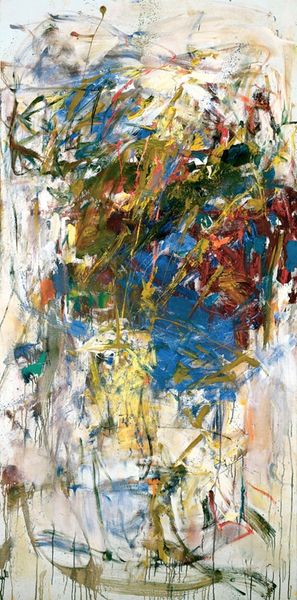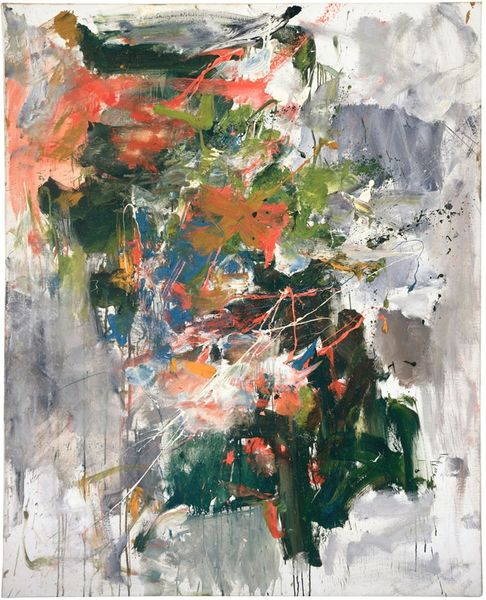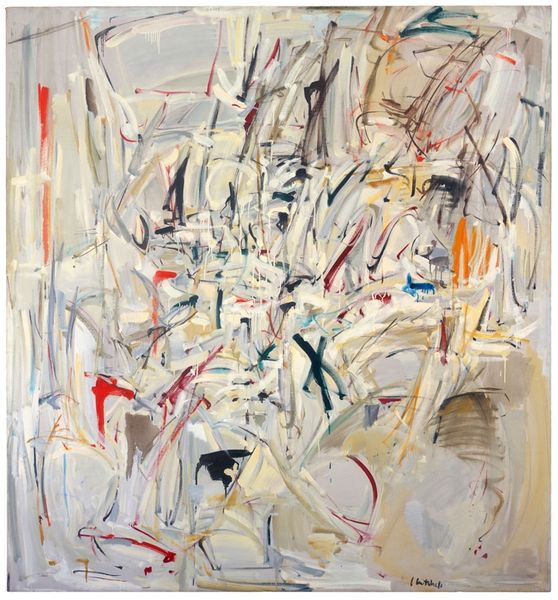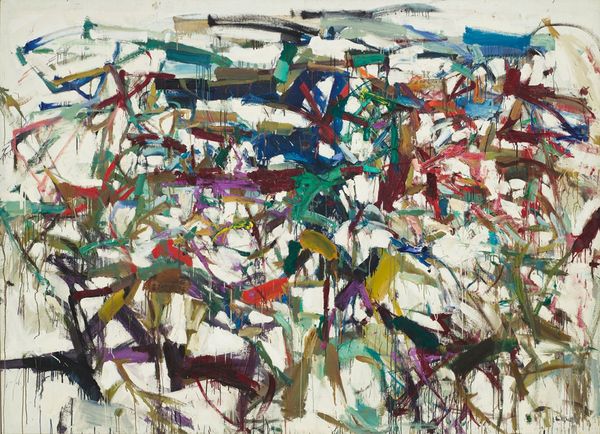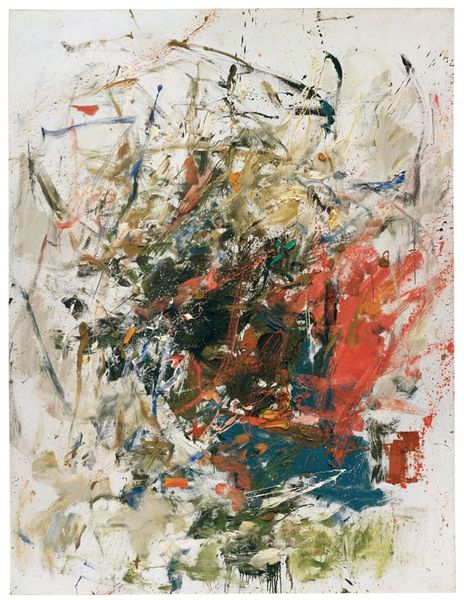
oil-paint, impasto
#
abstract-expressionism
#
abstract expressionism
#
oil-paint
#
landscape
#
impasto
#
abstraction
Dimensions: 222.6 x 239.1 cm
Copyright: Joan Mitchell,Fair Use
Curator: This vibrant canvas, known simply as "Untitled," was realized by Joan Mitchell in 1957 using oil paint, marking a pivotal point in her exploration of Abstract Expressionism. Editor: It explodes with a frenetic energy! The colours are so saturated, and the brushwork… almost violent, but somehow controlled. It feels chaotic but with a definite core of vibrant magenta. Curator: Precisely. Mitchell channels her emotional landscape into these dynamic compositions. While rooted in the traditions of landscape painting, it certainly isn’t a literal translation. We might see a dialogue here: what elements resonate most with your perception, informed by symbolic cues? Editor: I see a subconscious expression—gestural brushstrokes embodying freedom and intense emotion. Think about its time— the '50s, with artistic liberation movements gathering momentum. The bold colours suggest unbridled expression, pushing back against constraints. Those heavy blacks read like boundaries the colour desperately wants to cross. Curator: Indeed, the tension within is palpable. Consider how Abstract Expressionism, emerging post-World War II, became entangled with the narrative of American individualism and artistic freedom, with museums championing it on the global stage. Editor: This painting screams that struggle, that striving for something beyond. Yet the untitled nature seems to resist a single narrative—Mitchell offers feelings rather than facts, an experience rather than an explanation. Does it relate to other work of that time or is it unusual for its own time period? Curator: Although distinctly her own, it exists within a network. It interacts with work by Pollock and de Kooning, who are interested in surface treatment. Its large scale asserts itself, yet it avoids clear representation and moves towards the essence of a sensation—it’s about the sheer emotional heft. The choice to avoid specific titling seems to challenge the status quo. Editor: The intensity of her experience transferred directly onto the canvas - even today it generates a frisson. What does Abstract Expressionism have to teach us now? Curator: Today, it might embolden artists and viewers alike to embrace spontaneity and challenge inherited visual systems to explore and celebrate emotional veracity. And isn't that precisely where cultural change can begin?
Comments
No comments
Be the first to comment and join the conversation on the ultimate creative platform.

